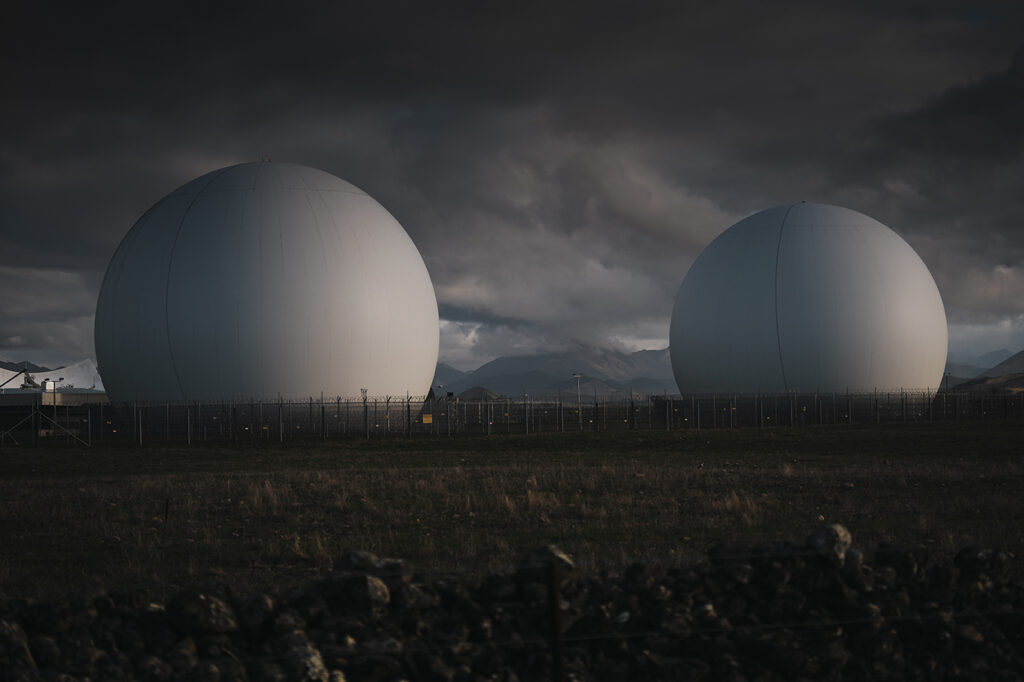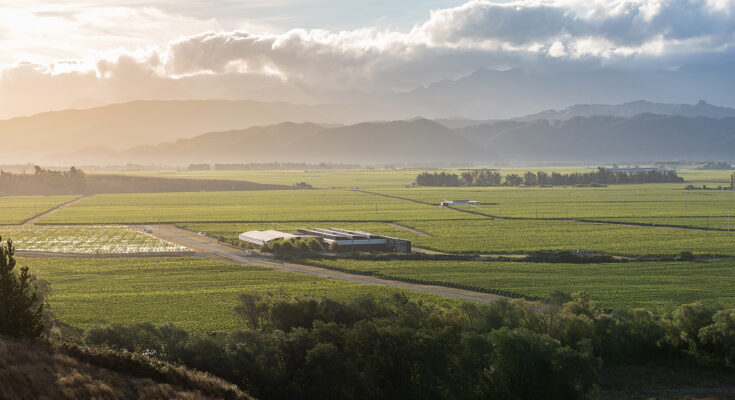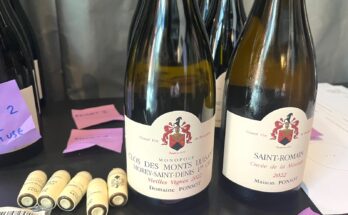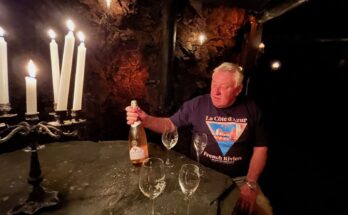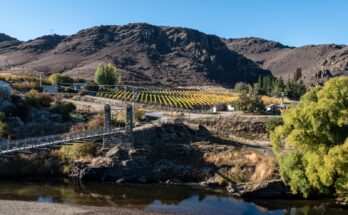Hidden in the heart of Marlborough, down a valley off the main highway is Spy Valley Wines – a family owned estate that has been called one of “the planets most notable new producers”. It just so happens that they share the valley with a satellite communication station that finds the terroir perfect for spying too. I’m here to talk to the owner, Amanda Johnson, and winemaker Wendy Stuckey on ‘International Sauvignon Blanc Day’ at the end of a flying visit to the region.
Amanda Johnson: In 1993 my parents purchased Timara Lodge across the Omaka river here and with it came some farmland. My Dad is in the finance world and not a farmer, so he said ‘what do we do with this land?’ and at that stage there were really no vineyards planted this far up the valley. But he’s always been a bit of a risk taker so decided to give it a crack and put it into vines. We planted out the Lodge Block over on Dog Point road and then not long after purchased the land over on this side of the river in the Waihopai Valley.
We began as Johnson Estate, which is my family name, and we were grape growers for Corbans for several years, with the vineyard managed by Peter Masters. In 1998 I moved to Marlborough to live on the vineyard and become involved with the family business. in 1999, we decided to create our own brand and build a winery. Our first vintage was in 2000, and we needed to come up with a name for the Winery and label?
Well there were some well-established ones by that stage, so we had a competition between friends and family. We wanted something interesting and that spoke to area, that we could have a bit of fun with and create a sustainable and authentic story behind it. My Brother-in-Law and I got down to the final two, and his vote was “Trout Creek”. He’s an artist and lives in Wellington – he’s done a lot of work in the winery and the paintings the hang in our cellar door, but didn’t appreciate that we don’t actually have trout in the local river!
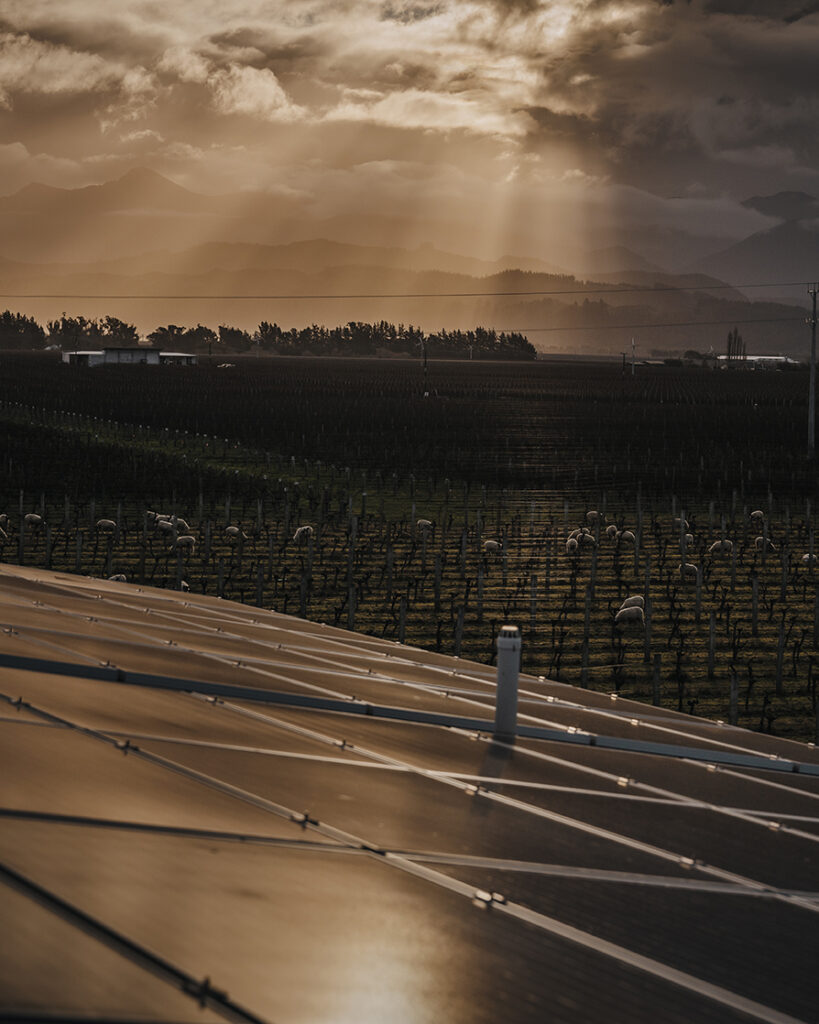
We have the intrigue of having the Five Eyes spy base up the road, which you should have a look at – it’s just a few kms up the road. When we first moved into the Waihopai Valley, all the locals jokingly called it Spyhopai Valley. So I thought “Spy Valley” was a fun play on the local intrigue. We can have a bit of fun but are focused on making serious wine. When we built the winery, the architectural cut-outs here are morse code in the wood panels, on the wine labels, and we’ve got a lot of James Bond prints and a spy theme that runs around – even out in the vineyards.
Since that time we’ve purchased a couple of other vineyards, in other parts of the Wairau and Omaka Valleys which give the winemakers different flavour profiles and complexities to play with.
WineFolio: is that an on-going thing – if vineyards come up you’ll look at that?
AJ: Yes, definitely. The most recent we purchased was ‘Black Knight’ which was about four years ago now. But we, probably like most others, are looking for more sauvignon supply. The demand certainly isn’t waning and we want to maximise the facility we have here. We do have a couple of growers as well who help with our sauvignon supply, because about 75% of what we produce and export is Sauvignon, and then we have about eight different varietals that we do, and are all estate grown.
We’re vertically integrated here – we grow our own grapes, produce and bottle on site, and warehouse it here. We also have our Sales and Marketing team and admin on site so it is a fun and diverse team. We get good quality control and have oversight from vine to table.
Our biggest markets are the US, and the UK which is making a bit of rebound now. We had a bit of a blip with some markets through COVID because we are predominantly on-premise in a lot of countries, and so that was hard hit. Although to be fair other markets have excelled at the same time. So it’s balanced out which is fortunate. After this vintage there’s a lot of juggling with allocations due to the low yielding harvest and supply chain issues with market partners. We’re lucky that we’ve got the UK and US. We export to about thirty five different countries but they’re our two main ones and have been our market partners for twenty years so we’ve got really great relationships with them.
This year is low yields which is unfortunate timing. I mean you couldn’t have more beautiful, cleaner-looking fruit and there is the demand. Amazing weather , and after last years Lockdown vintage challenges, although Wendy and the team produced some award-winning wines out of 2020 so that was wonderful.
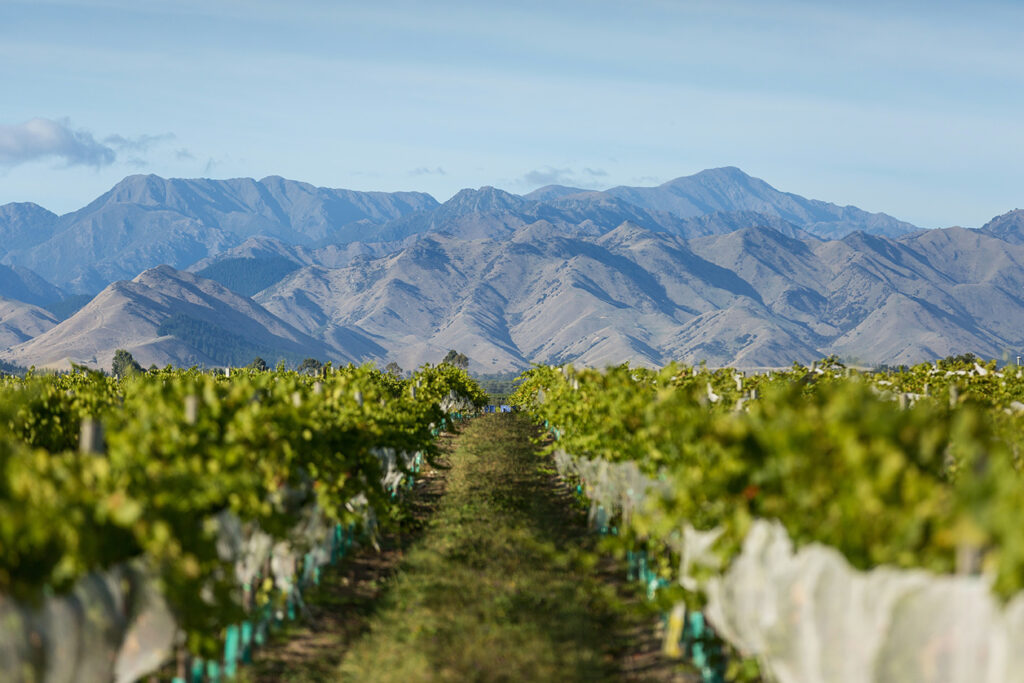
Wendy Stuckey: Our two Sauvignon Blancs – our Satellite and Spy both got Gold medals, plus an older vintage of Envoy got Gold medals at the Royal Easter Show, from the 2020 vintage. Gold medals aren’t easy to get.
WF: I was at the Easter Show this year. Certainly did some Sauvignon Blanc. I thought the 2020s were generally excellent right through. I think it’s a great wine – and an extremely important one. I did look at the calendar and think that I could probably be in town for ‘International Sauvignon Blanc day.’ It was about this time last year that I was going to come and the trip got cancelled.
AJ: Well we certainly welcome advocates of Sauvignon Blanc, because it is what keeps us all in business.
WS: And on the world wine scene too – it’s a story in itself, and no other variety or region has done anything like it.
AJ: This is our low alcohol, the 2020 – Easy Tiger. We have just recently updated our label.
WF: I like the back part, where it’s just information presented nicely – the front part on it’s own… I’m not sure!? And this is around 9% alcohol? I like the idea of that ‘Lighter Wine’ programme
WS: 9.5%. It was slow to catch on, I think it’s getting there. It’s like in the US it’s starting to go.
AJ: Our first market for the Easy Tiger was in the UK, just for one customer, and that was quite a few years ago. Now people are looking for alternatives around a health and wellbeing option. It is definitely picking up.
WF: I think if you are out at lunch and for any reason are not having alcohol, then it’s a viable alternative to a glass of water. However, if you’re sitting at home, and are more focussed on the experience and taste of a glass of wine, then perhaps those zero alcohol ones might disappoint?
WS: And it’s not that easy to make either, so that it does have a bit of weight to it. We put a portion of it through malolactic fermentation, get the acid down, balance it out.
AJ: For us it is nice to have the option in our range of Sauvignon. When you’re talking about the future – there’s another choice for people. But it has to be reminiscent of the truth, the style of a Sauvignon Blanc, and some of them don’t do that.
WF: When you starting making wine, did you have an ideal in mind?
AJ: Well, we’ve got the three main ranges. Spy Valley is our main flagship range, and then we have the premium Envoy range which is more parcel selection, and the Satellite range is more that entry level, easy drinking, everyday wine.
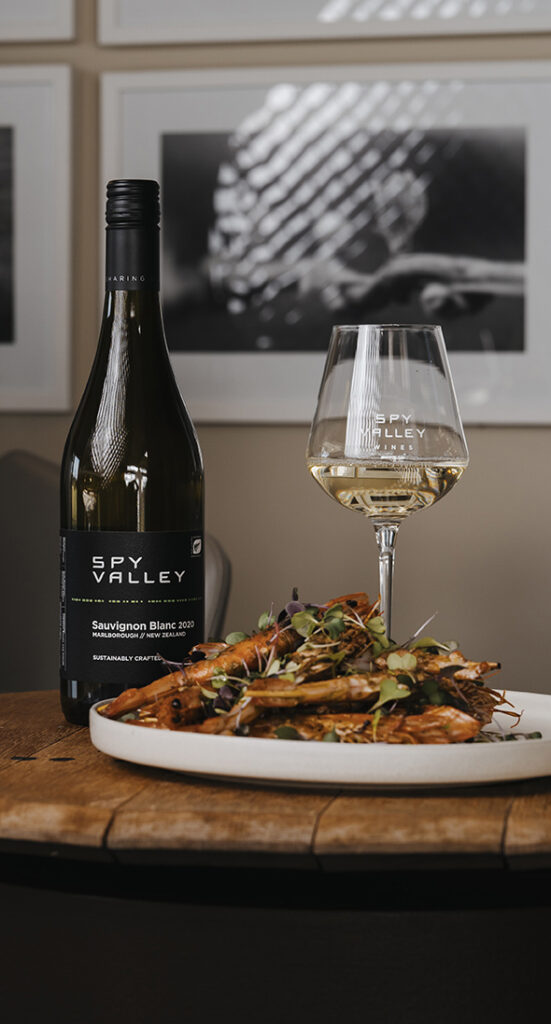
WF: has it always been like that or is it an evolution?
AJ: The Spy Valley range was the start and that’s what we do all the different varietals in. We’ve got quite a range there and then depending on the season, the winemakers will select what goes into an Envoy wine – if its worthy – and then we do a Sauvignon and Pinot Noir in the Satellite range.
WS: We also have a special range of single block Sauvignon, called E-Block. That sits in between Spy and Envoy.
AJ: You’ll see on our labels, on the front, the Sustainable Winegrowing logo, and we got a bit of flak for doing that but we have been a member of SWNZ for 20 years. It was sort of pre the big sustainable movement and now it’s like everyone is drawn to it. Why not use the tools you have – like being part of Appellation Marlborough Wine – to show that we are a true, authentic brand, and a sense of place. Those attributes are important to many consumers.
WS: The key is to differentiate yourself from everyone else.
AJ: We get good feedback from people about the amount of information that we put on the bottle, because someone takes a bottle of wine along to a dinner, or something like that and it’s nice that they can learn a bit more about it without having to google your website and read tasting notes.
WS: This is the Spy Valley 2020, a bit of a step up – this our classic label. We’ll have a look and get the E-Block as well.
WF: I like this one, it’s got a bit of everything. A bit more concentration, and generosity. It’s fruit-forward but it’s got some depth to it as well. I love the way it’s got that classic Marlborough start to it, but then it really deepens out into melon and stonefruit and a great texture.
WS: Most of the Sauvignon Blanc comes from vineyards around here and it’s a little bit more restrained, so it doesn’t have as much of those thiols – the punchy aromatics that you get from the Lower Wairau. We don’t have anything over in the Awatere. One of our growers lives just here – in that house you can see, and they’ve got a block of Sauvignon Blanc. And this year their Sauvignon Blanc is like Awatere…where does that come from?? Each vintage you can’t necessarily say that the wine is going to be the same.
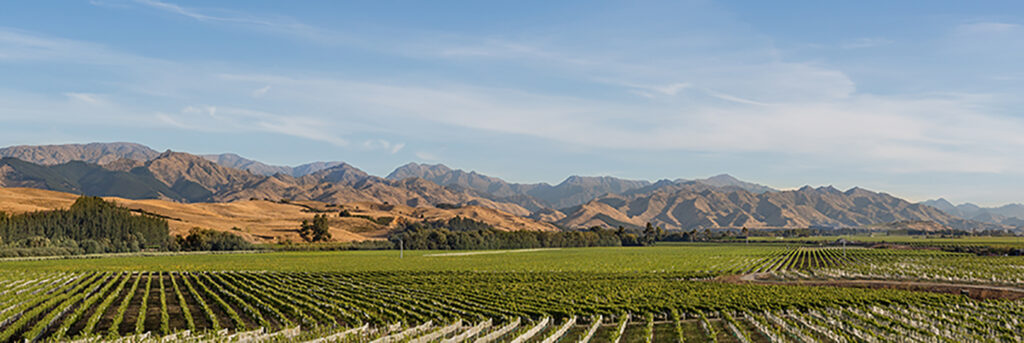
WS: The sub-regions do have a style, that’s fairly set, but in some vintages that can move around a little bit. Next week we’re about to start to look at our 2021s and they are looking good.
WF: I had some ‘21s, not finished wines, but oh wow, they were good. I love that essence of Sauvignon Blanc, before it’s been filtered and ‘tamed’ ready to bottle. When it’s cloudy and frothy – it’s intoxicating. If you could get people to drink that!!
WS: The best time for Sauvignon Blanc is when it’s about a third of the way through fermentation. When it still has the yeast and it’s sweet.
AJ: I love going into the winery and the smell is overpowering. Beautiful.
WS: This is our E-block 2018, so three years of bottle age. A portion of it was fermented in barrel.
WF: It’s got a nice complexity to it. Reminds of one of those Semillon-Sauvignon – which I love too.
WS: Not all Marlborough Sauvignon Blancs – but some, depending on where they’re sourced from and how they are made – can actually age really well. We did a full vertical tasting – including one from 2004 which had a cork in it. That’s what we need to promote as well, I think. The industry is trying to do that now – maybe not five or ten years ago, to show the breadth of what Marlborough Sauvignon Blanc can offer.
WF: Would you look to go organic?
AJ: We’ve trialled organics before in certain parts of the vineyard.
WS: I’d like us to go more ‘sustainable’ not necessarily organic.
AJ: Currently what we’re doing is trying to have a lower footprint. Doing less tractor passes, not under-vine mowing so much… we had a few comments when we started as it does look a bit more rough and ready. But it’s great actually. Not only is your carbon footprint coming down, but there’s savings in fuel and time. Also on the soil, because every tractor pass compacts the soils. There’s lots of good reasons for leaving it better than we started.
WS: I like the concept of organics but I think that whole regenerative agriculture is the way to go. Originally, before it was vineyards, this area was a bit of a wasteland wasn’t it. Farming, but with pretty tired soil.
WF: As it’s a family business, do you have succession plans?
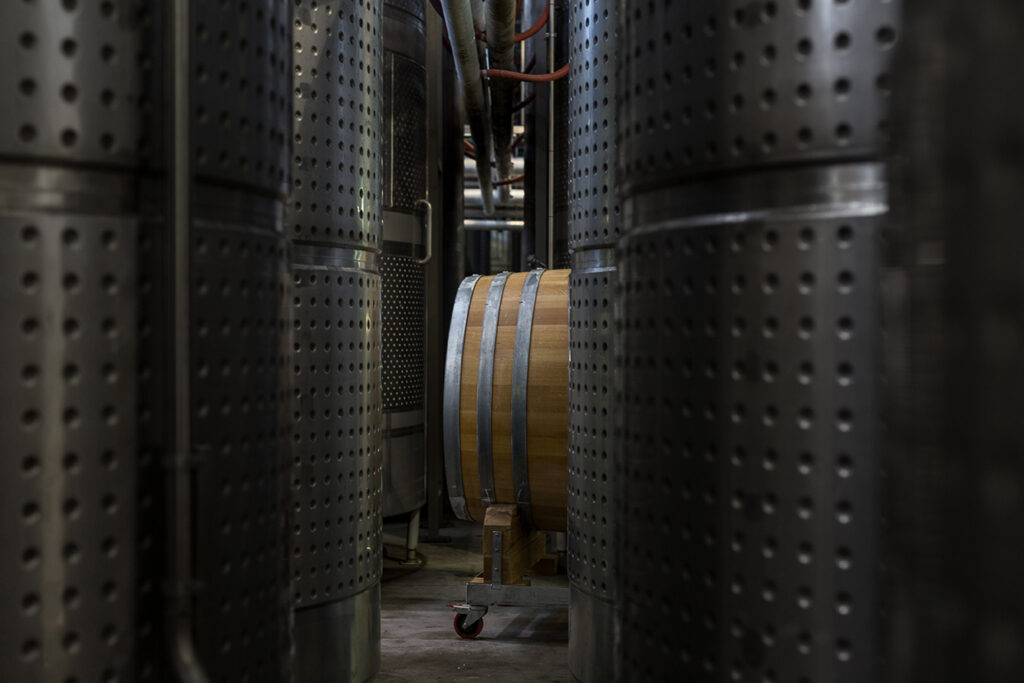
AJ: Well, my oldest nephew has gone into the hemp business, and my eldest has just completed his Masters and his thesis was on canned wine. All the kids come and stay with me on the hill up there, and the nieces and nephews come over summer. Their summer job is working in the vineyard. They have to start with the basics – which is picking up rocks! Then they move up to lifting wires and young vine training. But they have fun and enjoy working alongside our vineyard team. None of them have done a vintage yet, which I think would be a good experience. There’s lots of conversations that happen, but no definite plan, yet.
We want them to go out and learn and have different experiences and bring that back to the business, we want them to add value. Learn different ways of doing business.
(Wendy scoots off and returns with what looks like a couple of samples of fruit juice..)
WS: Now – this is dry – it hasn’t got any sulphur in it, it’s sitting in tank. This is one of our portions of E-Block 2021. We’re just trying to a get a little more texture from the yeast lees.
WF: Yum. Big citrus. Lime, lemongrass and nicely herbal.
WS: and this is the one block that we talked about earlier, that has that Awatere-like character.
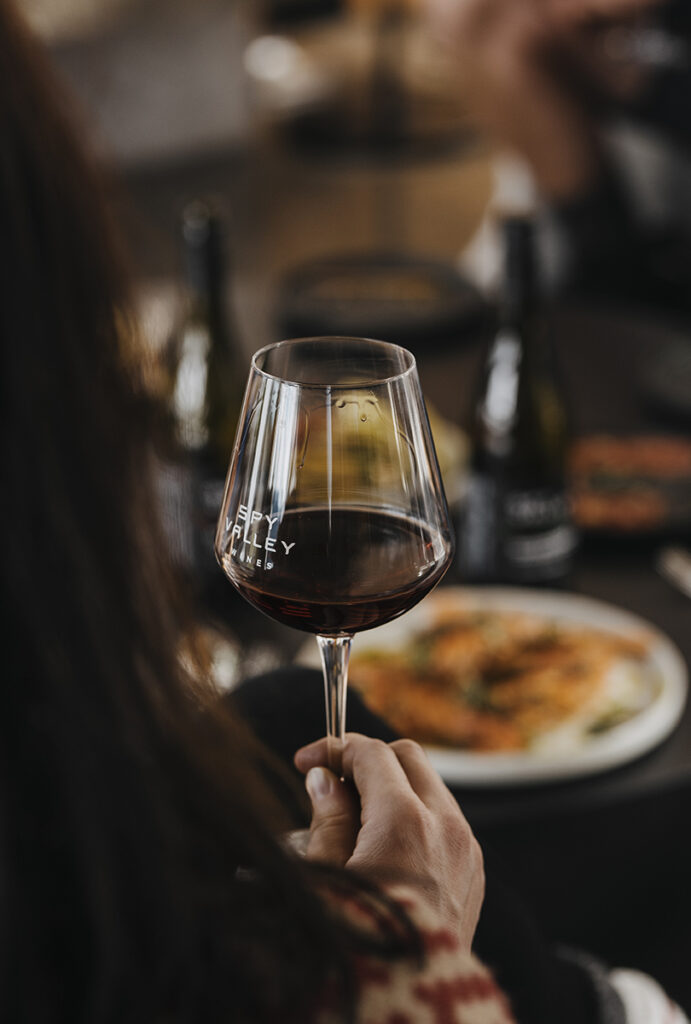
WF: Oh yes, it’s got that phenolic, apple-skin like character to it too. Green pepper, fennel, chamomile. Classic.
WS: These growers actually worked with us in the winery this vintage. Normally for vintage we would employ a lot of overseas workers, but this year was a bit more of a challenge, so three from the family and one of Dad’s friends kindly helped out.
WS: They were great to have here, and looked out for some of the younger ones, like a big happy family.
AJ: I think there’s going to be some stunning wines from this vintage. It’s really exciting. It’s an interesting year for wine, with what’s happened in Europe. We’ll treasure every drop.
What about something different to finish off – a Marlborough Syrah? We’ve got a lovely vineyard up the Omaka Valley, part of the Southern Valleys. If you went thru the river, it goes up the valley behind there. The Outpost vineyard is so steep that it’s all hand-picked, and it is north facing which is important. It’s lovely to have an alternative red on offer as well as Pinot, especially at the Cellar Door.
WS: I think that site selection is so important for Syrah in New Zealand. In cooler vintages you could end up with quite weedy wines otherwise. We only have small parcels but it’s fun to do and play around with. Aromatics has always been important, with Pinot Gris, Gewurz and Riesling as well. They are wines I enjoy making. We’re trying to fine tune things and find out what works with what – especially when you come into a winery as a new person.
I’m nearly two years in now – I was with Constellation here in New Zealand as their Chief Winemaker, and prior to that I was in the US for eight years up in Washington State. It’s a great region for wine and they do a lot of varietals across the board. Riesling is really good from there, and the Cabernets are great too. I’ve spent most of my career in larger companies, so coming to somewhere like Spy has been a challenge in itself, but it has been great. Gets me back closer to the winemaking which is really what I want to do.
AJ: And Wendy works with our young winemaker – Emily Gaspard-Clark who won the New Zealand Young Winemaker Award in 2019, so she’s an up-and-comer which is great. Wendy has so much experience and will be able to mentor her and help her along her pathway, which is really cool.
